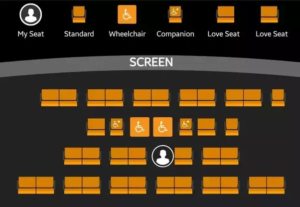Take Yourself to a Movie — Alone
Posted on April 3, 2018 at 8:00 am
I love seeing movies with my husband, my family, and my friends. I also love the pre-release screenings, where I get to hang out with my fellow movie critics, who are great friends and lots of fun to talk with about movies. But I also love to go go movies by myself (okay, I love seeing movies pretty much any way they come) and was delighted to read this tribute to solo movie viewing by Matthew Monagle of Film School Rejects:
Perhaps my favorite thing about watching movies by myself, however, is the lack of pressure to form an immediate opinion. Much to the annoyance of my friends and family members, I’m not particularly good at articulating how I feel about a movie until I’ve had a little time to think it over. Even then, I might not truly know how I feel until I start trying to write things down. Pauline Kael once described her writing process – and I’m paraphrasing pretty heavily here – as essential to the development of her opinion: she wouldn’t know how she truly felt about a movie until her words hit the page. I’m prone to that same sort of self-discovery. Sometimes it’s because I don’t want to commit to an opinion until I’m certain it’ll hold up under intense scrutiny; other times it’s because I can’t pin down my vague feelings of slight-dislike or slight-like for a movie I just watched. Whatever the reason, those extra minutes I spend to myself after watching a movie – on the subway, in the car, along the street – give me time to bounce ideas around in my head before trying an opinion on for size. And when you come across a movie you truly love, like The Devil’s Candy? Sometimes it’s just nice to sit and bask in it for a little bit without having to dig any deeper.
So the next time a movie catches your eye and you can’t find anyone to go see it with you, try something you may find a little uncomfortable at first: go by yourself.

